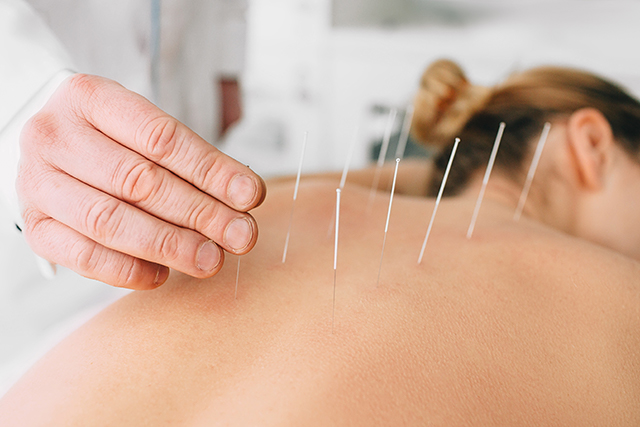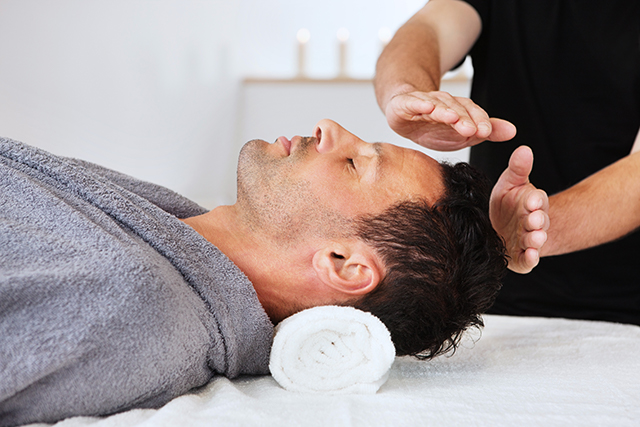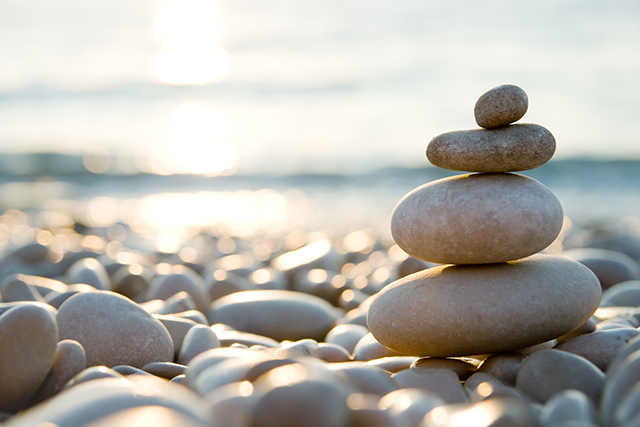Throughout the last year and a half, I have tried many different methods to deal with anxiety and stress. I read books, meditated, and created a consistent workout routine. But, it can be difficult to find what works best for you as an individual, which is why it is important to keep an open mind.
The one area that I have yet to delve into is holistic wellness. Holistic therapy is a growing practice that focuses on the individuality of a person and how they are affected by their environment.
Holistic remedies can be seen as unconventional and are not typically thought of as a way to handle stress, but studies have shown that they have proven to be safe and effective healthcare practices. These methods have been used for centuries and are based on the premise that one’s body can heal itself. Here are four different practices that may be able to help you become more in touch with your mind and body.
Acupuncture
Acupuncture has been practiced for thousands of years, but the methods of practice are constantly changing. Acupuncture, in simple terms, is a treatment where tiny needles are inserted through a person’s skin. The locations they are placed in are based on what type of pain you are trying to relieve.

Hearing needles, I assumed there was pain involved, but instead it is a painless procedure. The objective of acupuncture is to restore your body’s stress to equilibrium, and the needles hit different acupressure points to do so. Not only is your body being restored to a state of equilibrium, but you are able to relax while the session is happening, giving your body time to fully rest.
My main concern was how your body felt afterwards, but there are no drugs involved and there aren’t high risks associate with the practice. It is also recommended to continue sessions as the stress persists. Acupuncture can be a great way to relieve stress without having to put much effort in yourself.
Aromatherapy
Aromatherapy utilizes essential oils for therapeutic benefit to treat ailments ranging from a headache to tight muscles. Essential oils are created by pressing or steaming plants to make a fragrance that, when inhaled, travels to the amygdala, the emotional center of the brain. They can also be massaged into the skin.
Clinical trials have shown an improvement in anxiety, depression, and insomnia due to the use of aromatherapy. They have also been known to help with more measurable conditions such as irritable bowel syndrome, athlete’s foot, and even insect bites.
There are many essential oils and each has their own use. Here are some of the most popular ones:
- Peppermint: boosts energy
- Lavender: relieves stress
- Chamomile: improves mood and relaxes muscles
- Tea tree: fights infections and boosts immunity
It is important to exercise caution when buying essential oils, as they are frequently marketed incorrectly. Check the ingredient list and avoid all additives. Also, look for oils that are darker in color which translates to better quality ingredients.
Using essential oils around the house while working can help to reduce stress and ease tension, creating a more productive work environment.
Massage therapy
This was somewhat of a new concept for me. Of course, I knew that massages were a thing, but I was not aware of the responses that your body can have when it is done in a way to relieve mental stress and anxiety. A natural response to an anxiety-provoking or stressful situation is for your muscles to tense. The objective of massage therapy is to relax those muscles to combat the stress. It also can increase your serotonin and dopamine levels (the happy chemicals) to create more of an equilibrium.
This holistic practice may be the most accessible approach of the four because you can use this practice anywhere, at any time. In addition to reducing stress, massage therapy can also help with a multitude of other ailments. Trigger point massaging or deep massaging can help to target an injury, and massage therapy in general can help with nerve pain, digestive disorders, and headaches.

Reiki
I had never heard of reiki and had no idea what it entailed. But after looking into each of these methods, it is actually the one that I find most intriguing. Those who practice reiki have described it as acupuncture without the needles.
Reiki incorporates a technique called palm healing to provide relief to different areas on the body and encourage emotional and physical healing through a massage-like process. There are virtually no disadvantages to it, and some healthcare professionals use it in conjunction with regular medical treatments such as radiation and chemotherapy.
This practice is one where you become very in-touch with your body and mind. Some may experience a tingling or heat sensation and you are left with a clearer subconscious. Most go to a reiki therapist, but it is actually a practice that you can partake in individually.
If you have 20 minutes to set aside each day, you can use a safe space in your home to create a better, more relaxed work environment. There are ten positions that can be performed for at least two minutes each, all by yourself, to not only feel more at ease but to relieve symptoms such as headaches or stomachaches. All positions are done by placing your hands on different parts of your body and gradually increasing the pressure.
Reiki is a great addition to your daily regimen. Deandria Johnson, a senior manager in our Atlanta market, frequently practices reiki and welcomes it into her life. She found that it helped her deal with a profound loss and continues to practice it now.
An alternative approach
Before looking into holistic methods, I thought it seemed like a gimmick. I wasn’t aware of the science behind why each method works. In the future, I will be making more of an effort to use these techniques to help reduce my stress and anxiety.
Using these holistic practices can be a cheaper, more convenient, or easier alternative to many other more conventional methods. You may even find that one really works for you and makes your work-from-home environment much more enjoyable.







